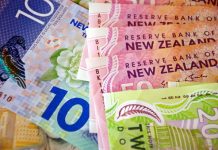Markets
Yesterday’s second tier US data (weekly jobless claims, PPI) undershot consensus again. It strengthened market conviction of the Fed’s tightening cycle not only coming to a close but that it is about to go in reverse soon to support a slowing economy. Short-term US yields initially dropped 6-7 bps shortly after the release before recovering again. Yields at longer maturities ended the day even 5.4-6.3 bps higher (10-y/30-y segment), reflecting hopes of the expected cutting cycle to boost the economic recovery going forward. The spread between the 10-y and 2-y over the past month halved, from -108 bps early March – the most since the early eighties – to -52 bps yesterday. German yields joined the US trend lower after the data but partly missed out on the late-session recovery at the other side of the Atlantic. Speeches from ECB members Kazaks and Holzmann came after European closing hours too. Both favoured another 50 bps May rate hike. The US dollar stayed in the defensive on currency markets amid a bright equity mood (Nasdaq finished 2% higher). DXY (trade-weighted) slipped from 101.5 to 101.01. EUR/USD shot op from below 1.10 to 1.1046, the highest close since end March 2022. We fear there is little that can save the dollar short-term, neither fundamentally nor technically. The economic calendar contains US retail sales and U. of Michigan consumer confidence. But given the market’s current reaction function, all the greenback can hope for is that is does not surprise to the downside. DXY is testing the 100.82 YtD low during the Asian session this morning. A break lower paves the way towards a support zone around 99.4. EUR/USD extends gains to 1.107 with from a technical point of view little in the way for a return to 1.1185. The picture for rates turned a bit more neutral in our view. It’s all tentative, but yesterday’s intraday price action at the front end of the curve suggests markets currently think enough cuts are priced in for the time being. For longer maturities, the bad economic news yesterday was eventually good news for yields. This combines with rates across all maturities consistently finding solid support from the lows set at the height of the financial turmoil mid-March. There are two risks to this hypothesis today: a huge miss in the data and/or the earnings season kickoff by the financial sector. Especially the latter’s effect on equity markets is critical. Another series of Fed and ECB speakers serve as a wildcard for trading. It took a while, but we’re finally seeing some movement in sterling as well, even as it is a non-autonomous, USD-inspired one. EUR/GBP rose for a third day straight to 0.8821 with the pound unable to profit from BoE Pill’s warning for a positive demand shock emerging (see headline below).
News Headlines
Bloomberg reports that Republican House Speaker McCarthy is preparing to unveil a proposal next week which would suspend the US debt ceiling for a year in return for spending concessions. The plan calls for a House vote in late May according to people familiar with talks. In return for the vote, non-defense discretionary spending would have to stay at roughly the same level as fiscal year 2022 and grow 1% per year over 10 years. The GOP plan will include other spending cut proposals and regulations changes which could form the basis of separate budget talks towards late May 2024. US President Biden and Democrats have long called for an unconditional increase of the US debt limit. US Treasury Secretary Yellen warned that the US debt ceiling could be hit as soon as early June. Without a deal to raise it, the country is at risk of default. CDS prices to insure against the risk and short term US money market rates stretching beyond June are starting to show signs of rising unease over the issue in the investor community.
UK chief economist Pill said that the less pessimistic outlook on UK unemployment is supportive for consumption given the relatively strong relationship between unemployment and precautionary saving. That gives space for a positive demand shock which may cloud the picture a return of double digit inflation towards the central bank’s 2% inflation target. Pill is worried about inflation (10.4% Y/Y) but the Bank of England needs to recognize there is scope to do too much as well as too little. He wasn’t lured into giving guidance for the May policy meeting (including new Monetary Policy Report) and added that the string of 11 interest rate hikes (to 4.25%) was weighing on inflation. UK money markets discount a 4.5-4.75% policy rate peak. The MPC is divided on whether the economy needs higher unemployment to return inflation to target.













